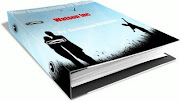Types of Investments: Investment Series Part Four
| July 31, 2007 | Posted by Roshawn Watson under Uncategorized |
Comments off
|
On Tuesday August 7, the WATSON INC EXCLUSIVE Interview with Van Crouch – President and CEO of Van Crouch Communications will be posted. Thank you for your patience.
By: Roshawn Watson
Rate This Article
Sponsors
Mutual Funds – several people pool their money to purchase many stocks, bonds, and other asset classes. By having so many assets as a part of one fund, an individual investors’ holdings of any one company is small. Accordingly, there is decreased risk due to diversification. Consider if the employees of Enron had diversified. Diversification could have saved them. Presently, mutual funds hold trillions of dollars because you own a small portion of many different companies instead of a lot of a few companies. One of the key principles of wealth building is risk reduction. A big drawback to mutual funds is that they are “professionally” managed. The fees these managers charge often decimate what profits the funds earn. These funds often underperform basic index funds and exchange traded funds exchange traded funds. Mutual funds also may make one liable for taxes even if you post a negative return (no profit) for a year. Some financial guru’s such as Robert Kiyosaki have openly criticized mutual funds for robbing investors of profits whereas most financial professionals have lauded mutual funds. The underperformance of mutual funds compared to the traditional indexes (i.e. S&P; index) prompted John Bogle to found mutual fund giant Vanguard and to start index funds. Another down side to mutual funds is that they can not be traded throughout the day like stock, so they are not as liquid.
Index Funds are funds that are designed to mirror, not beat, a particular index, such as the Dow Jones Industrial Average (DJIA). One criticism is that they doom investors to average returns of a specific index. The upside is that the average return is generally not bad at all. Recall that the historical average is 11%. For most investors, index funds are not a bad way to go.
Exchange traded funds (ETFs) have some liquidity in that one may buy and trade them like stock, yet they track an index like traditional index funds. Also, the price of many ETFs is low because they are passively managed (instead of being actively managed by a fund manager). For example, the Investing Bible says that the average yearly cost of a $10,000 investment is:
- 1. $18 with an ETF (Spider)
2. $66 with an S&P; index fund
3. $140 with average-price stock mutual fund
In the long run, those price differences generally save individual investors tens to hundreds of thousands of dollars. ETFs are often tax-efficient as well. Also, consider the fact that one would need between 20-50 individual stocks to be adequately diversified compared to just 1 ETF (i.e. VTI). Thus, with ETFs, one gets instant diversification at a good price; this explains why these funds are selling so well lately. Note some emerging ETFs are less broad than the original ETFs. Still, I am a huge fan of ETFs.
Here is the breakdown for the ETFs within MY PORFOLIO:
1. Vanguard Total Stock Market (VTI) – represents 54%
2. Ishares Msci Eafe Fd (EFA) – represents 25%
3. Ishares Msci E.M.I.F (EEM) – represents 7%
4. Dj Wilshire Reit (RWR) – represents 3%
5. Ishares S&P; Global Energy (IXC) – represents 11%
Investment Vehicles Everyone’s investment plan must be tailored to his or her’s own financial goals. However, one generally starts investing in pretax vehicles, such as (401K, 403b, Thrift Savings Plans, or Traditional IRA). If your company matches your contribution (for 401K, 403b, or TSP), I would contribute up until the match. Do not throw away free money. Then, I would max out a tax free savings vehicle (Roth IRA or Roth 401K). Within these investment vehicles, I would choose ETFs or index funds that reflect a similar breakdown as the one I listed above. For example, one could use my picks to create a balanced ETF-based portfolio: domestic equity (VTI), international equity (EFA), aggressive growth (EEM), and energy (IXC). If you have a TSP, I would do 40% C, 40% S, and 20% I.
My personal appeal: Find a discount brokerage firm, such as Sharebuilder ($4 trades), Scottrade, or zecco (FREE trades). Invest money at frequent intervals (Dollar Cost Averaging – i.e. monthly, quarterly, or annually). Over time, investing will likely be the decision that changes the financial destiny of you and your family.
Copyright 2007, Roshawn Watson, Pharm.D. All Rights Reserved.
I hoped you enjoyed learning about investing. We’ll cover this topic again in the future. Come back next week for my exclusive interview with Van Crouch, president and CEO of Van Crouch Communications.
Copyright 2012, Roshawn Watson, Pharm.D., Ph.D. All Rights Reserved.








Recent Comments